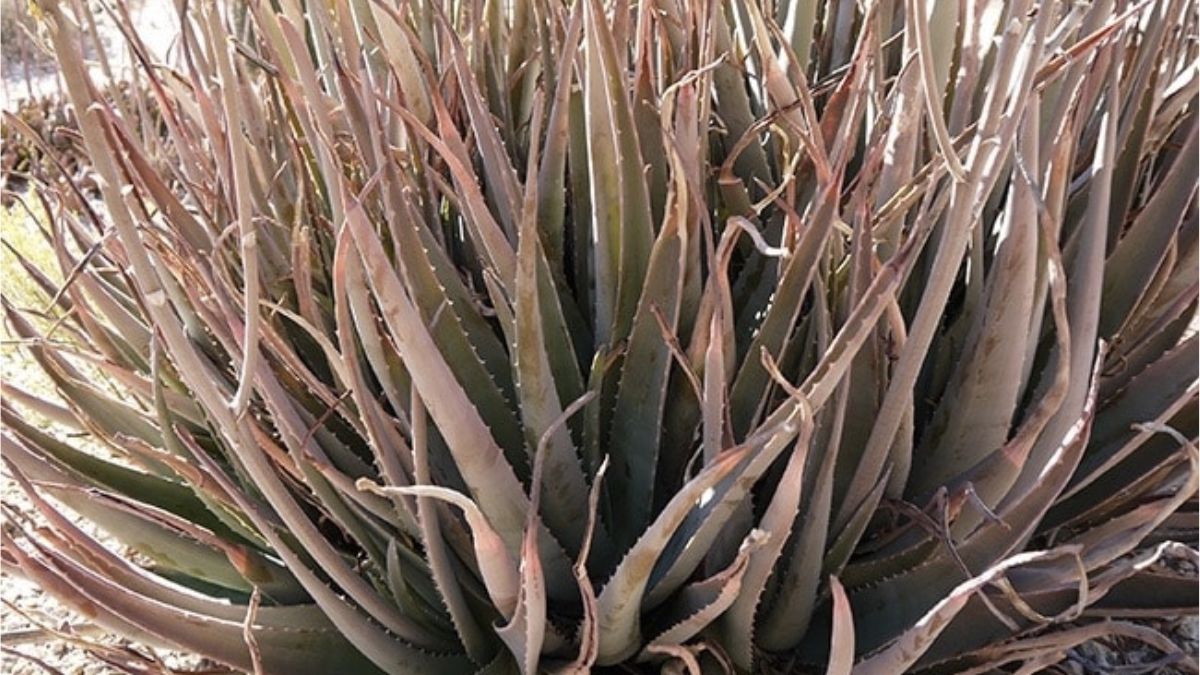Aloe plant turning red is a captivating phenomenon that unveils the hidden resilience and sensitivity of this beloved succulent. This transformation, a departure from its characteristic green hue, offers a glimpse into the intricate relationship between plants and their environment, inviting us to unravel the secrets behind this remarkable adaptation.
When an aloe plant turns red, it signals a shift in its physiological state, triggered by various environmental factors. Understanding the causes and implications of this color change empowers us to provide optimal care for our aloe companions, ensuring their well-being and longevity.
Physical Manifestations and Causes

When an aloe plant turns red, it exhibits several noticeable changes in its physical appearance. The most prominent change is the transformation of the plant’s leaves from their typical green color to various shades of red, ranging from light pink to deep crimson. This color change is accompanied by alterations in the plant’s texture, which becomes softer and more pliable.
The environmental factors that trigger this transformation are primarily related to stress conditions experienced by the plant. These stressors can include:
Sunlight Exposure
- Prolonged exposure to intense sunlight, particularly during the summer months, can cause the production of anthocyanins, pigments that give plants their red color, in the aloe plant’s leaves. These pigments act as a protective mechanism against the damaging effects of ultraviolet (UV) radiation.
Temperature Fluctuations
- Extreme temperatures, both hot and cold, can also induce redness in aloe plants. When temperatures drop below freezing, the plant’s cells may become damaged, leading to the release of anthocyanins as a protective measure.
- Similarly, excessively high temperatures can cause the plant to produce anthocyanins to shield its tissues from heat damage.
Water Stress
- Drought conditions or underwatering can cause aloe plants to turn red as a result of the accumulation of anthocyanins. These pigments help the plant conserve water by reducing transpiration, the process by which plants lose water through their leaves.
Nutrient Deficiencies
- Deficiencies in certain nutrients, such as nitrogen or phosphorus, can also contribute to the development of red coloration in aloe plants. These nutrients are essential for chlorophyll production, the green pigment that gives plants their characteristic color. When these nutrients are lacking, the plant may produce anthocyanins as a compensatory mechanism.
Implications for Plant Health: Aloe Plant Turning Red

The appearance of redness in aloe plants can have significant implications for their overall health and well-being. Understanding the causes and potential consequences of this phenomenon is crucial for maintaining the plant’s vitality.
Redness as a Sign of Disease
In some cases, redness in aloe plants can be a symptom of an underlying disease or infection. Bacterial and fungal diseases, such as Erwinia carotovora and Colletotrichum gloeosporioides, can cause reddish-brown spots or streaks on the leaves and stems. These infections can spread rapidly, leading to tissue damage and potentially compromising the plant’s survival.
Redness as a Stress Response
Redness in aloe plants can also be a response to environmental stresses. Prolonged exposure to intense sunlight, drought, or nutrient deficiencies can trigger the production of anthocyanins, pigments that give plants their red or purple coloration. This response helps protect the plant from excessive UV radiation and other environmental stressors.
Consequences of Prolonged Redness
While temporary redness due to stress is generally not a major concern, prolonged redness can have negative consequences for the plant’s health. Persistent stress can weaken the plant’s immune system, making it more susceptible to disease and pests. In severe cases, prolonged redness can lead to leaf drop, stunted growth, and even death.
Care and Prevention

An aloe plant that has turned red requires immediate attention to restore its health and prevent further damage. Proper care and preventive measures can help rejuvenate the plant and minimize the risk of future redness occurrences.
The primary cause of aloe plant redness is excessive sunlight exposure. Therefore, adjusting the plant’s lighting conditions is crucial. Move the plant to a location with indirect or filtered sunlight, such as a north-facing window or under a shade cloth. Avoid placing the plant in direct sunlight, especially during peak hours, as this can scorch the leaves and exacerbate the redness.
Watering, Aloe plant turning red
Overwatering can also contribute to aloe plant redness. Allow the soil to dry out completely between waterings. Water deeply, allowing the water to penetrate the entire root system, and then wait until the soil is completely dry before watering again. Avoid misting the leaves, as this can promote fungal growth and further damage the plant.
Temperature
Aloe plants prefer warm temperatures between 60-80°F (15-27°C). Exposure to temperatures below 50°F (10°C) can cause cold damage and lead to redness. Protect the plant from cold temperatures by bringing it indoors during the winter months or providing a heat source, such as a heat mat.
Preventive Measures
To prevent future redness occurrences, it is essential to provide the aloe plant with optimal growing conditions. Choose a well-draining soil mix and ensure the pot has adequate drainage holes. Water the plant deeply and infrequently, and provide bright, indirect sunlight. Avoid overfertilizing, as this can damage the roots and make the plant more susceptible to sunburn.
